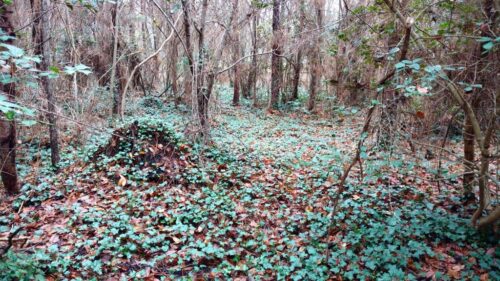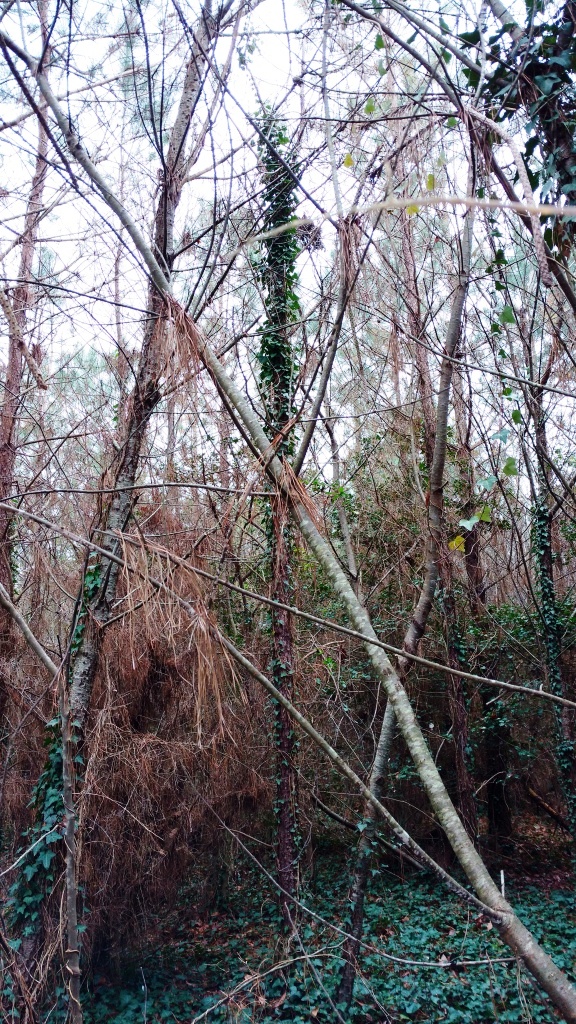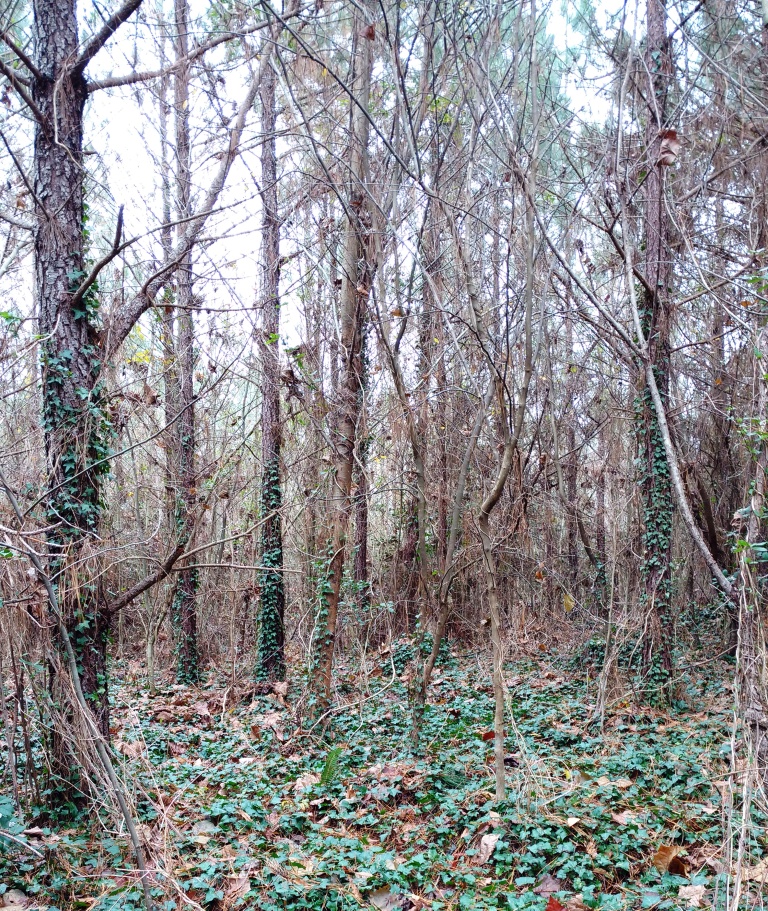Field Notes: What’s in the Woods Today? Jan. 23, 2018
January 23, 2018 11:08 am

by Area Forester Lisa Deaton
English Ivy
English Ivy is a non-native species introduced to North America by European settlers. In the woods, it is often found near old home sites and cemeteries. While many homeowners consider it an attractive ground cover in landscaped yards, English ivy can deliver a double whammy in the forest. It competes with trees and other plants for water, nutrients, sunshine and space on the ground, and then starts to climb everything.
Once in the canopy, the vines cover tree foliage and can grow heavy enough to break branches and tree tops. Because English ivy has the ability to grow in the wild and have harmful effects on our native species, we consider it an invasive species. English ivy has the competitive advantage of being able to grow in all light conditions, from deep shade to full sun.
Part of our work at the Department of Forestry is to alert landowners to invasive species on their land, with the hope of eliminating them before they become a large problem or spread to adjoining properties.
Many national, state, and local resources have been devoted to the elimination of invasive species in America because invasives can alter local ecosystems in so many ways. Food chains can be disrupted at their base simply by one native plant disappearing that supports one type of insect required by a larger insect, bird, or animal for food. Our agency participates in the Blue Ridge PRISM effort, a coalition for regional invasive species management focused on ten counties surrounding Shenandoah National Park. It is interesting to note that on other continents, natural resource agencies work equally hard to eliminate species introduced from North America. 
Tags: Invasive Species, What's in the Woods Today
Category: Forest Health
